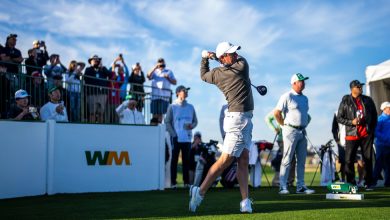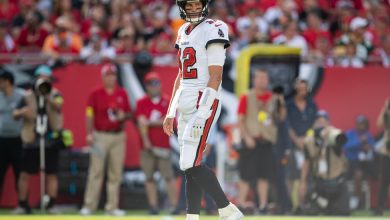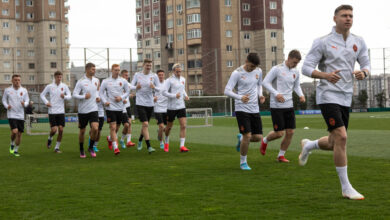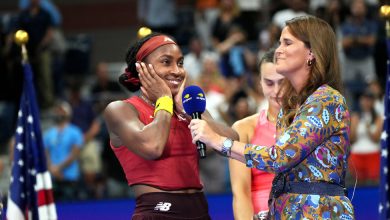Australia Has Dominated SailGP, but Other Teams Are Catching Up
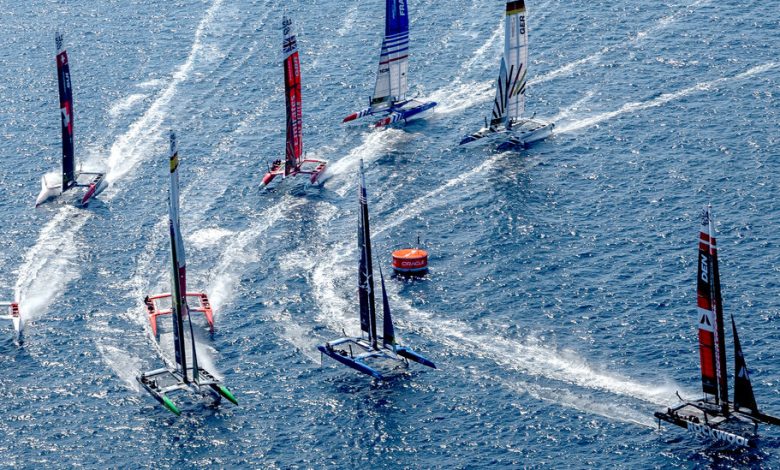
Tom Slingsby, the chief executive and driver of the dominant Australian team, said that winning SailGP’s first $1 million prize purse in 2019 was one thing. Trying to win it for a fourth consecutive time is much harder.
The team has won the league’s championship three consecutive times, making it the only SailGP squad to have held the title, but things are different this season.
There are more teams, more events and more pressure from up-and-comers and established teams. Also, next year’s America’s Cup is influencing racing for SailGP athletes and teams involved in both events as the SailGP season nears its halfway mark.
But, given the Australian team’s track record, its experienced core team and proven ability to perform under pressure, it’s still the team to beat.
That is, so long as the team, and its driver, remain confident.
“In season one, I think we probably won 90 percent of the events,” said Slingsby, adding that by season three this had dropped to about 20 to 30 percent. This season, although it has won individual races and amassed enough points to climb to the top of the leaderboard, the team has not won any of the first four regattas, which are each made up of several races.
“It is getting harder to get event wins, the level is higher,” Slingsby, an Olympic gold medalist, said. “More teams just means if you make mistakes, you pay more than you used to.”
SailGP’s first event was in 2019 with six teams contesting five events. Now, 10 teams are competing in 13 events. The next event, the season’s fifth, is in Cádiz, Spain, on Saturday and Sunday.
While more teams mean increased racecourse congestion, it also means more sailors with experience aboard the league’s F50 catamarans, which can sail on hydrofoils at speeds pushing 55 knots.
“The more seasons you go through, the less difference there will be between Australia and the rest of us,” said Nicolai Sehested, the driver for fourth-place Denmark. “This season we are a lot closer, but they are still ahead of us.”
While Sehested said that Denmark built their team with Danish sailors, other teams import talent, which means established teams can face the danger of their crew being hired away by the competition.
Kyle Langford, Australia’s wing- trimmer, received another offer ahead of season four, but he declined, citing his friendships and the team’s potential.
Still, Ben Durham, the team’s performance coach, called the poaching threat the biggest challenge that the team has faced all season. “The great thing was that we were able to maintain everybody,” he said. “That’s really important.”
The team dodged this personnel drain, but it can’t escape other teams’ learning curves.
“These teams you think of as teams we should beat, it just doesn’t work that way anymore,” Slingsby said. “Anytime you get complacent, you get pretty humbled, pretty quickly.”
He’s not alone in this assessment.
“I think Australia has been slipping a little bit, left a few points out there compared to where their potential is,” Sehested said.
While Langford said he believed the Australians would continue to improve, he also said the team was aware of the targets on its back. “We need to be improving just as fast as these guys are,” he said.
Of the 10 competing teams, four are on their fourth season, three are on their third and two are on their second. Only Germany is new for this season.
“I think most teams will be competitive by the second season,” Sehested said.
SailGP’s open-data policy helps.
Each F50 has electronic sensors that harvest 30,000 data points per second, which are sent to an Oracle-based cloud and made available to all teams.
“There’s no secrets out there,” Durham said
F50s are identical, but teams can — as allowed by the rules — adjust their equipment and settings. As with all other data, these are also shared.
Sehested said his team leveraged the cloud to analyze where the Australians were out-sailing them. “Then we just try to copy their settings and their technique the next day,” he said.
Still, Sir Russell Coutts, a five-time America’s Cup winner and SailGP’s chief executive, said that seeing data and emulating on-the-water performance were different things. One example, he said, is Australia’s ability to fly their boat about one-and-a-half inches higher than other teams.
Greater ride height means less drag.
“They just can’t duplicate that,” Coutts said. “It still comes down to that human ability to do it, and the Australians are an example of that.”
This is where experience matters.
Team members and league officials pointed to the importance of logging time aboard F50s, but SailGP limits this. Coutts said new teams were allotted additional practice time, meted out over multiple seasons, and local teams were given time for promotional purposes. If time allows, underperforming teams are sometimes given the opportunity to book extra practice.
“It’s all about allowing the lower-ranked teams to have an opportunity to catch up to the higher-ranked teams to hopefully make the racing more competitive,” Coutts said.
While time on F50s is limited, sailors and teams are free to sail other boats.
The 2024 America’s Cup, which, like SailGP, will be contested aboard high-performance foiling boats, will give some SailGP sailors more practice time.
“I think that the non-Cup teams or the sailors who aren’t racing in a Cup team together [are] at a huge disadvantage,” Langford said, explaining that Cup sailing provides valuable training.
The core of the New Zealand and the Emirates Great Britain SailGP teams work together on Cup teams, and other squads, including Australia, Canada, and Switzerland, also have individual sailors involved with the Cup.
This includes Slingsby and Langford, but Australia’s core SailGP team isn’t sailing together in the Cup.
This could give Emirates Great Britain and New Zealand an advantage as the season progresses, Langford said. However, Australia has its own strengths.
Langford said these included honesty, open communications and camaraderie. “There’s no personal agendas or egos,” he said. “It’s just, ‘Let’s just get better together.’”
Another sometimes-elusive point, made by both Slingsby and Langford, is the team’s ability to achieve a kind of group mind. “We kind of hit that flow state sometimes, where it’s almost like we don’t even have to communicate onboard,” Slingsby said. “That’s when I feel really confident.”
Confidence, sailors say, plays an important role. And this is where Australia’s team dynamics pays dividends.
“We definitely try and speak about it as a group, and we try to be open about it,” Durham said about times when confidence flags. “Identifying it and not hiding it is probably the key with Tom.”
Slingsby, for his part, said that he’s been feeling confident in this season’s first events.
“The fact that you’re seeing this dominant performance by the Australians sets the bar really high for everyone else,” Coutts said. He compared the team to the Chicago Bulls, which won six N.B.A. titles in the 1990s. “I think we’ve got a similar situation here,” he said.
Still, Coutts sees no reason to amend the rules to help other teams catch up. “I think we just let the best athletes win,” he said, adding that if anything, he’s inclined to make the boats more reliant on skill. “If one team is good enough to win all the time, I’m comfortable with that,” he said.
But with only four of the season’s 13 events decided, season four is a live ball.
“I wouldn’t bet the farm that they are going to win,” Coutts said of Australia. “It’s close.”
Slingsby acknowledges the challenge, but said he believed in his team and trusted its process.
“I think that we’ll win,” he said. “We’ve been in that million-dollar race three times, and we know how to perform under pressure and get the job done.”
